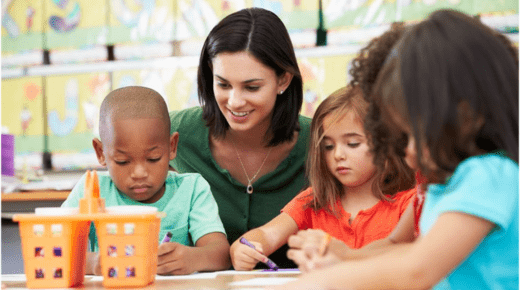Balancing Academics and Creativity – Finding Activities that Foster All-Around Development

In the pursuit of fostering well-rounded development in children, balancing academic learning with creative exploration is crucial. A holistic approach ensures that children not only excel in their studies but also develop skills and interests that contribute to their overall growth. This balance can be achieved through carefully designed activities both within and outside the traditional classroom setting. This article explores how preschool programs and outside school hours care play pivotal roles in nurturing both academic and creative skills.
Preschool Program: Laying the Foundation for Balanced Development
Preschool programs are instrumental in laying the groundwork for a child’s educational journey. At this formative stage, it is essential to integrate both academic and creative elements into the curriculum to support comprehensive development.
1. Early Literacy and Numeracy: Preschools often focus on building foundational skills in literacy and numeracy. Interactive activities such as storytelling, phonics games, and simple math exercises introduce children to basic concepts in a fun and engaging manner. These activities not only prepare children for future academic success but also stimulate cognitive development.
2. Creative Expression: In addition to academic learning, creative activities are vital. Preschools incorporate art, music, and imaginative play into their programs to encourage self-expression and creativity. Activities like drawing, crafting, and role-playing help children explore their creativity, develop fine motor skills, and enhance problem-solving abilities.
3. Social and Emotional Development: A well-rounded preschool program also emphasizes social and emotional growth. Group activities and cooperative games teach children important social skills such as sharing, empathy, and teamwork. These experiences contribute to emotional intelligence and the ability to navigate social interactions effectively.
4. Physical Development: Physical activities such as outdoor play, dancing, and simple sports are also integral to preschool programs. These activities promote physical health, coordination, and a positive attitude towards physical exercise, which is essential for overall development.
Outside School Hours Care: Extending Learning Beyond the Classroom
Outside school hours care programs play a significant role in continuing a child’s development beyond the traditional school environment. These programs offer opportunities for children to explore new interests and skills in a less structured setting, complementing their academic learning.
1. Enrichment Activities: Many outside school hours care programs offer enrichment activities that focus on areas such as science experiments, coding, or creative writing. These activities provide children with a chance to delve deeper into subjects they are passionate about, fostering a love for learning outside the standard curriculum.
2. Creative Workshops: Programs often include creative workshops that allow children to engage in activities like painting, drama, or music. These workshops encourage children to express themselves artistically and develop their talents in a supportive environment. Such activities not only enhance creativity but also build confidence and resilience.
3. Recreational and Social Activities: Outside school hours care programs frequently incorporate recreational activities such as sports, games, and team-building exercises. These activities promote physical fitness, teamwork, and social interaction, offering a balanced approach to after-school care.
4. Homework Support: Many programs also provide homework support, ensuring that academic responsibilities are managed effectively. This support helps children balance their schoolwork with other activities, reducing stress and promoting a positive attitude towards learning.
Integrating Academics and Creativity: A Balanced Approach
To achieve an optimal balance between academics and creativity, it is essential for both preschool programs and outside school hours care to adopt a holistic approach. Here are some strategies for integrating these aspects effectively:
1. Curriculum Integration: Preschools and after-school programs should aim to integrate academic content with creative activities. For example, a science project can be combined with artistic elements like creating models or visual presentations. This integration helps children see the connection between different areas of learning and enhances their understanding.
2. Encouraging Curiosity: Fostering a sense of curiosity and exploration is crucial. Programs should create environments where children feel encouraged to ask questions, explore new ideas, and take risks in their learning. This approach nurtures a growth mindset and a lifelong love for learning.
3. Providing Choice: Allowing children to choose from a variety of activities helps them develop their interests and passions. Providing choices in both academic and creative areas ensures that children engage in activities that resonate with their individual preferences and strengths.
4. Supportive Environment: A supportive environment that values both academic achievement and creative expression is essential. Educators and caregivers should recognize and celebrate diverse talents and interests, ensuring that every child feels valued and motivated to excel.
Conclusion
In conclusion, balancing academics with creativity is fundamental to fostering well-rounded development in children. By incorporating a blend of academic and creative activities within preschool programs and outside school hours care, we can support children in becoming well-rounded individuals with a passion for learning and exploration. Emphasizing this balance helps ensure that children thrive academically while also developing their unique creative talents and interests.




